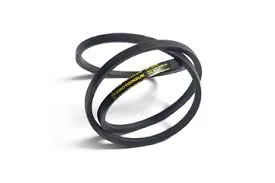- Arabic
- French
- Russian
- Spanish
- Portuguese
- Turkish
- Armenian
- English
- Albanian
- Amharic
- Azerbaijani
- Basque
- Belarusian
- Bengali
- Bosnian
- Bulgarian
- Catalan
- Cebuano
- Corsican
- Croatian
- Czech
- Danish
- Dutch
- Afrikaans
- Esperanto
- Estonian
- Finnish
- Frisian
- Galician
- Georgian
- German
- Greek
- Gujarati
- Haitian Creole
- hausa
- hawaiian
- Hebrew
- Hindi
- Miao
- Hungarian
- Icelandic
- igbo
- Indonesian
- irish
- Italian
- Japanese
- Javanese
- Kannada
- kazakh
- Khmer
- Rwandese
- Korean
- Kurdish
- Kyrgyz
- Lao
- Latin
- Latvian
- Lithuanian
- Luxembourgish
- Macedonian
- Malgashi
- Malay
- Malayalam
- Maltese
- Maori
- Marathi
- Mongolian
- Myanmar
- Nepali
- Norwegian
- Norwegian
- Occitan
- Pashto
- Persian
- Polish
- Punjabi
- Romanian
- Samoan
- Scottish Gaelic
- Serbian
- Sesotho
- Shona
- Sindhi
- Sinhala
- Slovak
- Slovenian
- Somali
- Sundanese
- Swahili
- Swedish
- Tagalog
- Tajik
- Tamil
- Tatar
- Telugu
- Thai
- Turkmen
- Ukrainian
- Urdu
- Uighur
- Uzbek
- Vietnamese
- Welsh
- Bantu
- Yiddish
- Yoruba
- Zulu
Out . 12, 2024 14:56 Back to list
industrial synchronous belts
Understanding Industrial Synchronous Belts An Essential Component for Modern Machinery
Industrial synchronous belts are vital components in various machinery and equipment used across diverse industries. These belts, known for their precision and reliability, are designed to transfer power efficiently between two or more rotating shafts while maintaining synchronization. This ensures that the components operate in unison, which is critical in applications ranging from automotive systems to manufacturing processes.
One of the key features of synchronous belts is their tooth design. Unlike traditional V-belts, which rely on friction to transmit power, synchronous belts utilize a series of evenly spaced teeth that engage with corresponding grooves on pulleys. This unique design minimizes slippage, allowing for accurate timing and improved efficiency. As a result, synchronous belts are particularly suitable for high-speed applications where precision is paramount.
The materials used in the construction of industrial synchronous belts also play a crucial role in their performance. Typically made from durable elastomers, these belts often incorporate reinforcement materials such as steel or fiberglass to enhance strength and longevity. This makes them resistant to wear and tear, even in demanding environments. Additionally, many synchronous belts are designed to operate under a wide range of temperatures, making them versatile enough for various applications.
industrial synchronous belts

Another significant advantage of synchronous belts is their low maintenance requirements. Once properly installed, they require minimal adjustment and maintenance, contributing to reduced downtime in industrial operations. This aspect is particularly beneficial in sectors where machinery uptime is critical, such as in automotive assembly lines or high-speed manufacturing processes.
Moreover, the use of synchronous belts can lead to energy savings. By providing more efficient power transmission compared to other belt types, they can help lower energy consumption in industrial machinery. This not only results in cost savings but also contributes to increased sustainability within manufacturing processes.
In summary, industrial synchronous belts are an indispensable element in modern machinery. Their unique tooth design ensures synchronized movement, while their robust construction provides durability and efficiency. With low maintenance needs and energy-saving benefits, these belts support the smooth operation of machinery across various industries. As technology continues to advance, the role of synchronous belts in enhancing industrial performance will only grow, making them a pivotal component in the evolution of manufacturing and automation.
-
Korean Auto Parts Timing Belt 24312-37500 For Hyundai/Kia
NewsMar.07,2025
-
7PK2300 90916-T2024 RIBBED BELT POLY V BELT PK BELT
NewsMar.07,2025
-
Chinese Auto Belt Factory 310-2M-22 For BMW/Mercedes-Benz
NewsMar.07,2025
-
Chinese Auto Belt Factory 310-2M-22 For BMW/Mercedes-Benz
NewsMar.07,2025
-
90916-02660 PK Belt 6PK1680 For Toyota
NewsMar.07,2025
-
drive belt serpentine belt
NewsMar.07,2025

